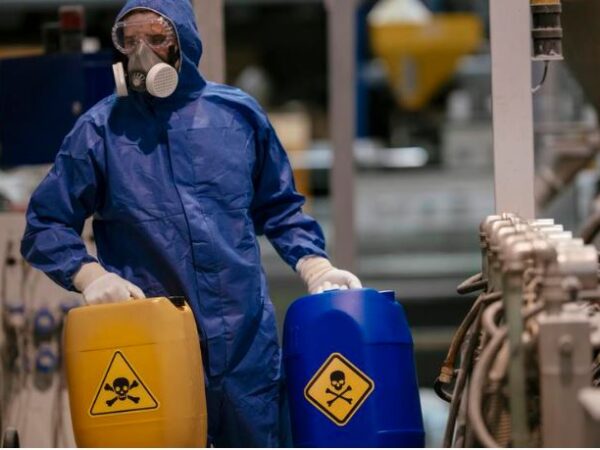 The Occupational Safety and Health Administration (OSHA) can justify coming to your place of business for many different reasons. One of those reasons is a random inspection. Random inspections are the least likely reason you may be inspected, although you should be prepared.
The Occupational Safety and Health Administration (OSHA) can justify coming to your place of business for many different reasons. One of those reasons is a random inspection. Random inspections are the least likely reason you may be inspected, although you should be prepared.
What is a random inspection?
A random inspection is simply that: random. Your facility may not have a high injury rate; your employees may all be happy with you and the working conditions; you may not have any formal safety complaints filed against you; and your industry may not be on OSHA’s targeted inspection list or part of a National Emphasis Program. For all practical purposes, there might not be any reason for the inspector to come to your facility except for a computer program that selected you arbitrarily.
If you operate safely because you know it is good business to protect your employees from hazards, injuries and occupational illnesses, you have nothing to worry about. You may find the random inspection to be nothing more than a nuisance. But you must be ready to show the inspector that you are maintaining your workplace in a safe condition and your employees are following safe work practices.
However, if you play the odds and just hope an OSHA inspector never comes to your door, you are more likely to see an inspector for one or many of the other reasons an inspector might show up.
This article will focus on good business practices that will help you be ready if you are selected for a random inspection.
Preparing for a random OSHA inspection
Your safety culture should showcase more than just your compliance. It should demonstrate that you, your people and your workplace are performing well. OSHA does want to see that you are in compliance with its requirements. But if your safety culture is based on compliance alone, you are likely not getting enough cooperation, engagement or participation from your people to achieve success.
You need to start somewhere, so we will briefly review the compliance requirements that the OSHA inspector will assess during their inspection. If you are prepared, you are on your way to building an effective safety culture.
In no particular order, here are some steps you can take to prepare for a random OSHA inspection:
- Conduct a personal protective equipment (PPE) risk assessment and maintain a risk assessment document. This will identify hazards and exposure to hazards within the workplace and for assigned tasks. It may incorporate job safety and job hazard analyses that become part of your standard operating procedures. It will guide your hierarchy of controls and help you prioritize and develop safety action plans throughout your facility to keep your people safe and productive.
- Review OSHA’s Top 10 Most Frequently Cited Standards. Pick any year — the top ten categories have not changed in 20 years. This list is a hot news item in October and November of every year, yet nothing ever changes. Familiarize yourself with the most frequently cited standards and then assess your workplace. Identify and correct any items that could result in a common citation.
- Write and maintain your written plans as prescribed in the OSHA standards. A simple internet search will provide tips, lists and templates. The following standards require a written plan or program:
| Emergency Action Plan | 1910.38 |
| Process Safety Management of Highly Hazardous Chemicals | 1910.119 |
| Hazardous Waste Operations and Emergency Response | 1910.120 |
| Respiratory Protection | 1910.134 |
| Permit-Required Confined Spaces | 1910.146 |
| The Control of Hazardous Energy (Lockout/Tagout) | 1910.147 |
| Employee Alarm Systems | 1910.165 |
| Powered Industrial Trucks | 1910.178 |
| Electric Power Generation, Transmission and Distribution | 1910.269 |
| Electrical Safety-Related Work Practices | 1910.333 |
| Subpart Z: Specific Chemical Substances | 1910.1000 to 1910.1018, 1910.1025 to 1910.1029 and 1910.1043 to 1910.1096 |
| Bloodborne Pathogens | 1910.1030 |
| Hazard Communication | 1910.1200 |
| Occupational Exposure to Hazardous Chemicals in Laboratories | 1910.1450 |
| Posting | Job Safety and Health Poster Form 3165 |
| OSHA Forms for Recording Work-Related Injuries and Illnesses | 300 Log |
- Establish an audit schedule. This is an administrative check to ensure you have the required compliance documents and programs in place. If you find a shortfall, create an action item to address it.
- Develop and update items that are often overlooked, such as your chemical and hazardous substance inventory list; forklift and mobile equipment preshift inspection checklists; weekly emergency eyewash and shower inspections; and emergency contacts and phone numbers.
- Develop and maintain training records for emergency actions and evacuations; forklift and crane certifications; first-aid and CPR certifications; and hazard communication and confined space trainings.
- Conduct and document emergency drills and evaluations at least once a year.
- Engage your people in all of the above activities. Allow them to offer suggestions, participate in walkthrough inspections and help mitigate hazards.
If you are randomly inspected, only produce the documents that the inspector is mandated to review while on site. This includes your Summary of Work-Related Injuries and Illnesses (OSHA 300A), OSHA postings, training records, written plans, and medical surveillance programs and records (hearing tests, X-rays, blood samples, etc.).
Some of these items are time-consuming but none of them are difficult. Once you have met the basic compliance requirements, focus on proactively identifying and correcting workplace hazards. Engage your employees in this process and maintain a positive (not punitive) environment.
When you produce the required compliance documents in a timely manner, you are demonstrating a good faith effort to comply with the inspector. This can go a long way toward shaping the outcome of the inspection. Doing so also reduces the risk of employee complaints and injuries.


